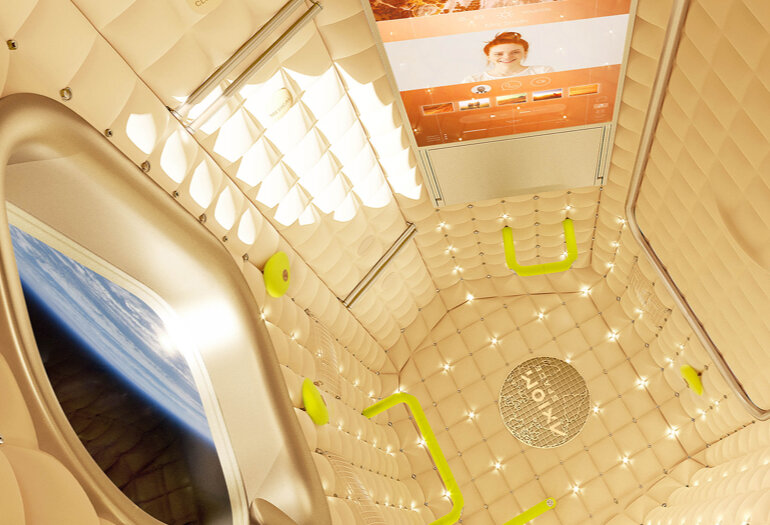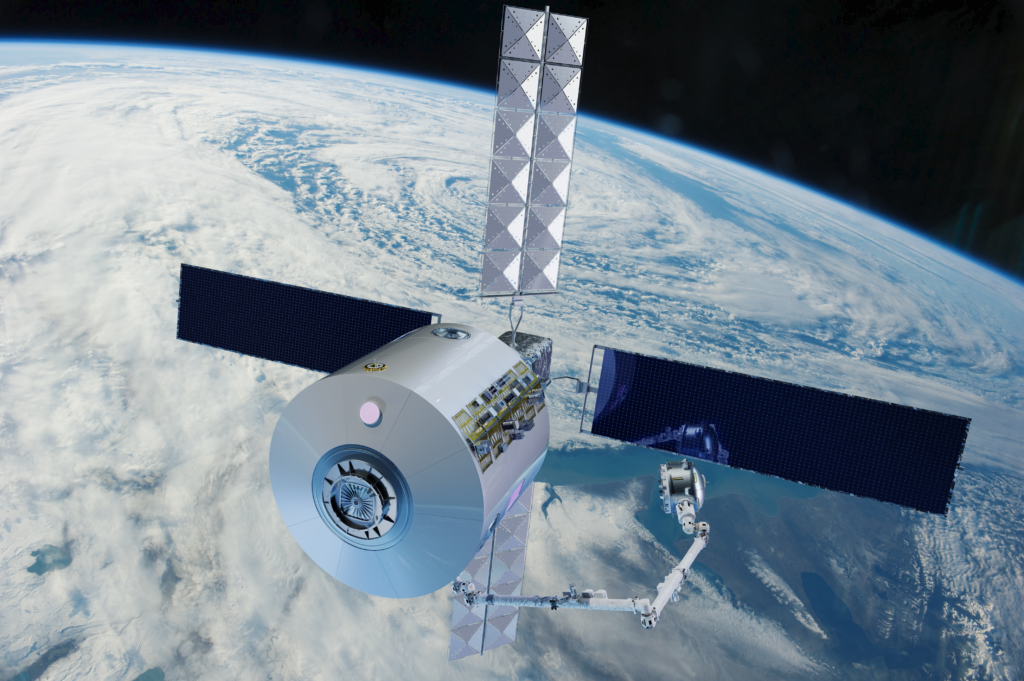On Sept. 27, 2023, NASA astronaut Frank Rubio broke the record for consecutive days in space, completing a single mission aboard the International Space Station of 371 days, which conclusively proves that astronauts can live in space for over a year and suggests that astronauts can survive in space much longer. (Russian cosmonaut Valery Ryumin also logged 371 days in space, but broken over four missions).
It’s an exciting milestone towards longterm human endurance and sustainability in space. Do you want to live in space in the near future? Here is an updated list of the prospective locations.
Day Trips
Virgin Galactic will get you to the edge of space, and has been launching several people about once per month. They have a considerable backlog of pair customers, so it you aren’t already on their list, don’t hold your breath for a trip. Blue Origin has also launched several missions of passengers. There was a mishap (on a flight involving no passengers) on September 12, 2022, but the FAA closed the investigation on September 27, 2023, so flights will presumably resume. You can catch a ride all of the way to the International Space Station (ISS) on the Axiom Space also provides rides on the SpaceX Dragon capsule.
International Space Station
It is still up there in space. Transit routes are as a government astronaut or on an Axiom mission (above).
Tiangong Space Station
China continues to expand its Tiangong space station in low earth orbit and is aiming for continuous habitation.
Axiom Station
Construction is underway of what is billed at the world’s first commercial space station. Preliminary and critical design reviews in collaboration with NASA have been completed. Partners Thales Alenia Space has begin fabrication of the primary structures of Axiom Station’s first module. Then final assembly and integration of the module will be completed in Houston. Axiom Space is preparing for a 2026 launch of the first section of the station. It will operate in low earth orbit (LEO).
You will be living in style in quarters designed by Philippe Starck. You could also be dressed in style in a Prada-designed space suit.
Starlab
The Starlab space station is lead by Nanoracks, Voyager Space and Lockheed Martin. Voyager Space has itself teamed up with Airbus, Above Space and Orbital Assembly. Starlab plans to launch in 2028.
Want to invest? Above Space has posted a crowd-investing link on its site, although it appears to be for related but different companies.
Orbital Reef
The Orbital Reef space station is being proposed by a consortium of aerospace companies, lead by Blue Origin with partners, Sierra Space, Boeing and Redwire. However, despite receiving $130 million under NASA’s Commercial Low-Earth Orbit Destination program, the future of the Orbital Reef project is uncertain. CBS reports that “Blue Origin and Sierra Space are navigating a potential end to the Orbital Reef space station partnership”. Motley Fool reports that Blue Origin is now focused on its $3.4 billion government contract for Blue Moon, an astronaut moon lander and that Sierra Space is having success with its Dreamchaser project and investing in its own space station concept, but that NASA reports that Orbital Reef is still being worked on.
Northrop Grumman / Lunar Gateway
Despite being awarded $125.6 million by NASA under the agency’s Commercial Low-Earth Orbit Destination program, Northrup Grumman Systems Corporation has dropped out of the competition an an individual firm. Instead, it will work with Voyager Space to provide supply missions to the Starlab station.
However, the Lunar Gateway (NASA, ESA, CSA and JAXA), previously called the Deep Space Gateway, and now sometimes just the Gateway or the Gateway Space Station, is expected to be launched in 2025 (previously 2024). The Gateway will be the furthest semi-permanent human facility in space. The only existing means to get there will be the Space Launch System and its Orion capsule. The SpaceX Starship could possibly reach it as well.
Moon and Mars
Although NASA has no specific plans yet to land humans on Mars, there are concrete plans to send humans to the Moon by the end of this decade via the Artemis missions, including the Human Landing System (HLS). SpaceX and Blue Origin are the contracting companies working on HLS. The cost of landing on the Moon (and especially getting back) are very expensive, even by aerospace standards. To get a ticket, you’ll need to be a very lucky government astronaut. Private astronauts might be able to buy a ticket to a Starship mission to the Moon, but the ticket price likely won’t be for the feint-of-heart, even for billionaires.
There is talk of sending the SpaceX Starship to Mars. So if that is your dream location, you can start with impressing Elon Musk by getting one of those verified X accounts.
Sustainability Analysis
Although these new facilities can increase the quantity of people who can simultaneously live in space, none of these facilities for living in space appear to do much to improve sustainability. Frank Rubio’s mission longevity record might be broken in incremental steps, but not by an order of magnitude unless there are also at least an order of magnitude in investments in life support technologies. Such investments do not appear to be taking place.
UPDATED to include section on Orbital Reef.



